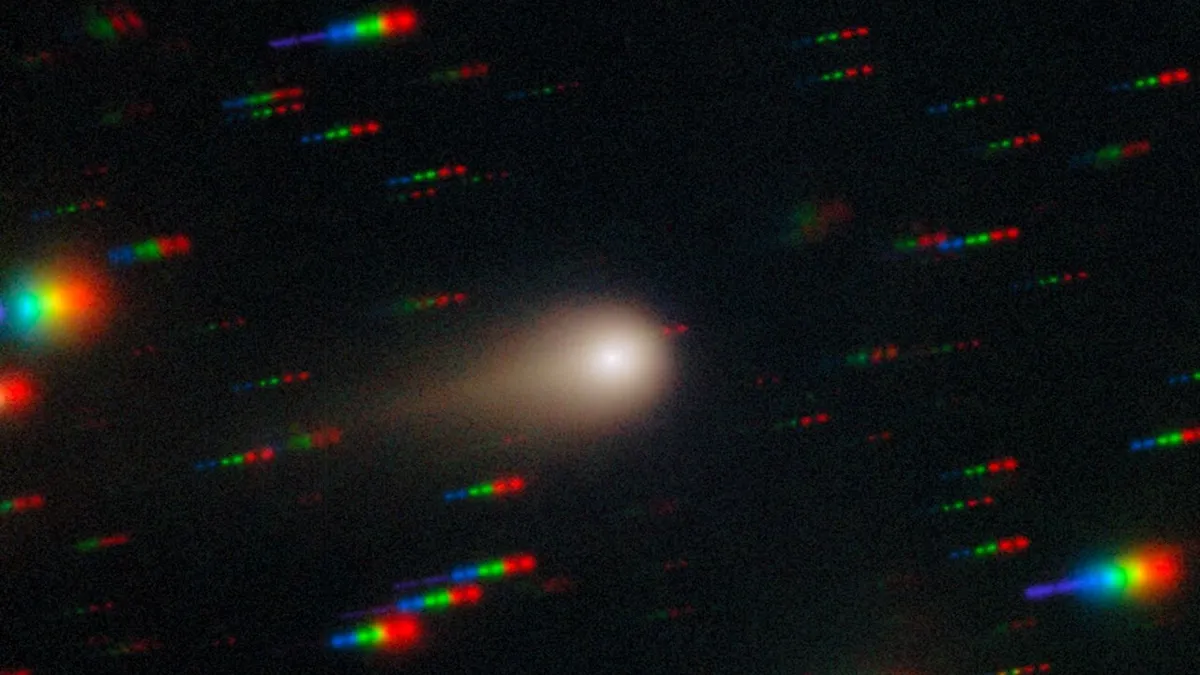
As the dazzling Comet Lemmon graces our night sky, another awe-inspiring celestial object remains hidden from direct view on the far side of the sun: the interstellar comet 3I/ATLAS. This remarkable visitor, believed by astronomers to originate from an unknown star system far beyond our own, holds a unique position in the realm of space exploration. Not only is it the third interstellar object ever detected in our solar system, but it is also recognized as the largest, fastest-moving, and likely the oldest interstellar object ever observed.
NASA confirmed the existence of 3I/ATLAS in early July, and since then, this enigmatic comet has been on a significant journey through our solar system. As it approaches the halfway point of its orbit, the comet is set to reach perihelion — its closest approach to the sun — on Wednesday, October 29th. At this crucial juncture, 3I/ATLAS will come within approximately 1.4 astronomical units, or about 130 million miles (210 million kilometers), of our star.
As 3I/ATLAS nears perihelion, the intense radiation from the sun heats its icy nucleus, triggering geysers of gas and dust that create a glowing coma around the comet. The solar wind's pressure pushes this material into a striking and elongated tail that trails behind it. Observers can expect the comet to be more prominent and visually striking when it becomes visible to telescopes again in early November, potentially appearing both larger and brighter than it was two months prior.
The scientific community is poised to capture data from 3I/ATLAS using a wide array of astronomical instruments on the ground, in orbit, and even those en route to Jupiter. This interstellar comet is poised to become a significant focus of study as it departs our solar system, offering a rare opportunity to uncover secrets about the outer regions of our galaxy and its enigmatic past. The insights gained from observing this celestial body could provide invaluable information about our cosmic neighborhood.
As we await the return of 3I/ATLAS to our line of sight, we can take comfort in knowing that the warmth of the sun embraces us while a wealth of cosmic knowledge lies just beyond our solar system. Until then, we can marvel at the images captured by instruments such as the National Science Foundation-operated Gemini South telescope in Chile, which provided one of the clearest images of the comet to date on August 27th.